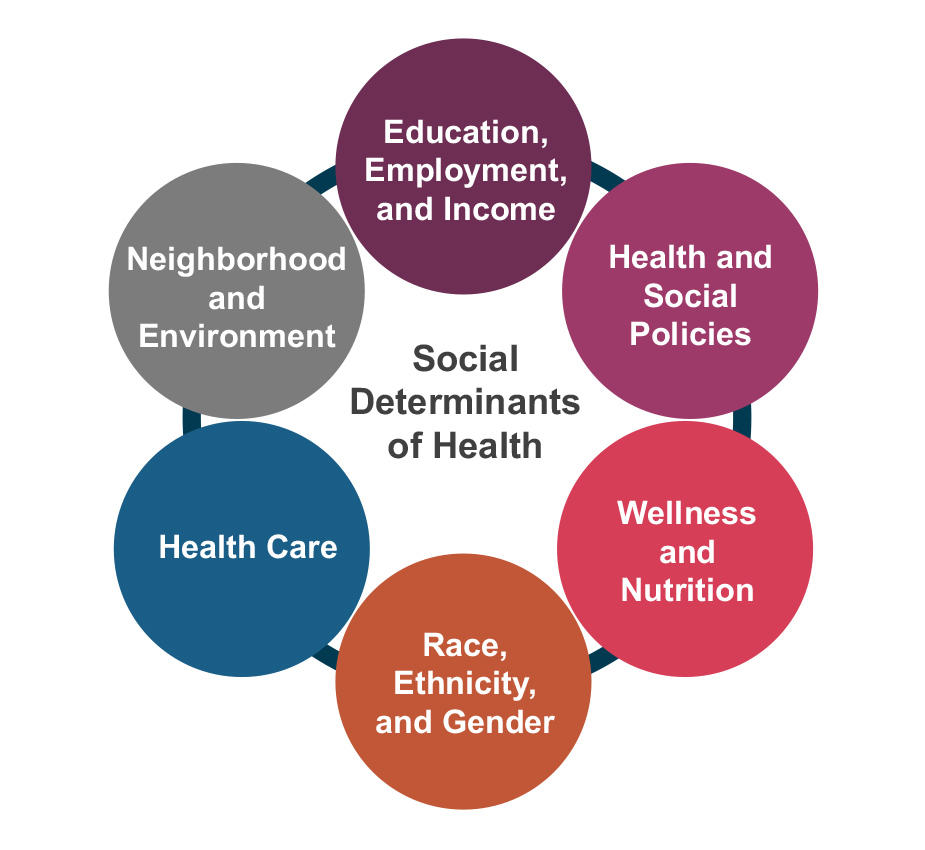Reducing the Cancer Burden: Future Directions for NCI's Cancer Control Research
, by Elia Ben-Ari
Katrina Goddard, Ph.D., joined NCI in October 2021 as director of the Division of Cancer Control and Population Sciences (DCCPS). Dr. Goddard is a genetic epidemiologist who has studied the use of genomic information to benefit public health, including incorporating genetic testing and other genomic technologies into patient care. Before coming to NCI, she was a distinguished investigator and director of the Department of Translational and Applied Genomics at the Kaiser Permanente Center for Health Research in Portland, Oregon.
To mark her first year at NCI, Dr. Goddard discusses future directions for DCCPS and her overall priorities for the division. These future directions and priorities are outlined in the division’s newly released 2022 Overview and Highlights report, which also provides snapshots of the division’s progress over the past year.
Q: What exactly is cancer control research?
Cancer control research studies ways to reduce the burden of cancer, from cancer prevention all the way through improving the quality of life for survivors.
Q: Your background is in genetics and statistics. How did you get interested in public health research?
Both when I was in graduate school and when I was first starting my career as a faculty member, at Case Western Reserve University, I studied genes that contribute to people’s risk of developing certain conditions, such as prostate cancer, early-onset Alzheimer’s disease, and Werner syndrome. It was an incredibly exciting time, when the technology for genomic research had just started to take off and the human genome had not yet been completely sequenced.
If you fast forward about 10 years after those discoveries were made, it became clear to me and other researchers that we needed more research to understand how to use this genetic information to achieve the full potential of this new knowledge to have an impact on people's lives. So, I started getting interested in what would be needed to move these discoveries into clinical practice.
Q: What do you see as DCCPS’s unique role? How does the division’s work fit into the bigger picture of cancer research?
DCCPS is a bridge to population health within NCI. Some of the work that we do is in developing new approaches to reduce the burden of cancer in the population. Within DCCPS, we have a strong program in behavioral research, which includes studies of tobacco control, obesity, alcohol use, and other lifestyle factors that have an impact on cancer risk.
Our surveillance research program is critical to understanding patterns of cancer incidence and mortality and how these change over time and in different population groups. This helps us to monitor progress in reducing the burden of cancer and understand new concerning trends, such as the increasing mortality from uterine cancer and increasing incidence of early-onset cancers such as colorectal cancer, that need greater emphasis and research.
The epidemiology research program focuses on identifying novel genetic and environmental factors that increase risk for cancer, predict prognosis or disease progression, or alter quality of life for cancer survivors.
We also support the translation of preventive strategies or treatments that are developed in other parts of NCI so that more people can benefit from these discoveries or inventions. For example, we study approaches that could enable more people to receive HPV vaccines. These vaccines can prevent cervical cancer and certain other types of cancer.
DCCPS has also done a lot of work to better understand how we can improve the use of preventive services, including cancer screening.
Q: Where do you see future opportunities for the division’s efforts in cancer control?
We want to ensure that we're building on the strong foundation of research that DCCPS has achieved since it was established 25 years ago. Over the past year, we gathered input from the research community and other partners to identify six areas of opportunity for the division.
We also need to make sure that we remain nimble and can react and respond to emerging situations and opportunities. The dramatic increase in the use of telehealth during the COVID-19 pandemic was a good example, where we had an opportunity to think about changing how we deliver care. Addressing the effects of climate change on cancer and cancer care is another example.
We also need to create opportunities to achieve things that the research community and individual researchers would find challenging to accomplish on their own. Data sharing is an example. We want to provide leadership for the research community, including building platforms to house data and facilitate data analysis and encouraging a culture among researchers and clinicians that supports data sharing. This will maximize use of the research we fund.
Q: Can you explain these focus areas a bit more? Let’s start with health equity.
Health equity means attaining the highest level of health for all people. When those of us in the cancer control field talk about wanting to reduce the burden of cancer, we're thinking at a population level—reducing the burden of cancer for all people, regardless of their individual characteristics, personal identity, or factors such as where they live, work, and play.
This includes areas with persistent poverty and groups that experience food or housing insecurity. Currently, about one-third of DCCPS research grants focus on the needs of underserved and underrepresented populations, and our support of research in this area continues to grow. For example, over the past several years, we have had initiatives and funding opportunities in the areas of rural health and Native American health.
Another aspect of health equity is the importance of including diverse populations in our research so that research results are meaningful to everyone. This is something that not only our division but also the rest of NCI and the National Institutes of Health more broadly have been focusing on. We also seek to tailor the approaches that we develop to specific populations, including ensuring that they are culturally appropriate.
And finally, we aim to create delivery and implementation strategies that address the barriers that different populations experience, such as language barriers; health literacy; and discrimination based on race, ethnicity, sexual orientation, gender identity, or gender expression.
Strategies to address these barriers might include interpreter services or bilingual staff, using plain language in patient materials and communications, and education and training programs for staff to prevent discrimination and promote gender sensitivity. We all sometimes experience the health care system as a maze that we need to figure out how to get through.
That maze can be more challenging for some people than for others, so we’re trying to ensure that we're addressing the needs of all populations in navigating that maze.
Q: How does climate change relate to cancer and cancer research? What would DCCPS’s role be in addressing some of these effects of climate change?
The long-term changes in the climate, together with the natural disasters and other events that are happening due to climate change, are affecting our health in a variety of ways. Climate change is changing the air quality, polluting our water, changing our food quality, and changing our exposure to sun and heat in ways that may increase cancer risk.
For example, wildfires increase the amount of particulate matter (tiny solid particles and liquid droplets) in the air, which can increase the risk of lung cancer as well as other kinds of cancer. Changing our sun exposure could increase the risk of skin cancer. And changes in water quality may increase our exposures to other cancer-causing substances.
Climate change can also have more indirect effects by affecting our behaviors. For instance, people who are experiencing a lot of smoke due to wildfires may not go outside to exercise, so their level of physical activity goes down. Climate change can also affect the availability of cancer treatment, especially if care is interrupted during a natural disaster. Our health care delivery system is not resilient enough to manage these disasters and they are happening more frequently.
Some of the research we conduct is aimed at simply understanding what the impacts of climate change are on cancer and care delivery. And then the second piece is developing approaches that can lessen those impacts, such as changing how cancer care is organized or coordinated, or how it is delivered, in a way that makes it more resilient to the effects of climate change.
Q: How could digital health, which is another of your proposed focus areas, help reduce the burden of cancer?
Technology is one possible solution that can support the health care delivery system in many ways, including ensuring patient safety and patient satisfaction. It might include helping doctors and patients better adhere to clinical guidelines and other ways of improving the overall quality of cancer care. The goal is to support both the patient and the clinician in completing the cancer care that is recommended for that patient.
For example, through the Cancer MoonshotSM, we recently funded a telehealth initiative that will help gather evidence about the use of telehealth to deliver cancer care. During the COVID-19 pandemic, there was a dramatic increase in the use of telehealth almost overnight. But our evidence has been lagging in terms of learning whether telehealth technology has been improving convenience for patients and satisfaction with the care they receive, as well as understanding its impact on quality of care and patient safety.
And to connect it back to our health equity focus, we need to ensure that these digital strategies do not worsen health disparities because of issues such as lack of access to technology or a lack of skills needed to use technology.
Q: What is your big-picture vision for how to achieve the goals that DCCPS has developed?
The vision is to have a multilevel approach that does not focus solely on individuals but also includes communities, families, and society as a whole in reducing the impact of cancer in all segments of the US population. That includes focusing on things like policies or the human-made spaces where people live, work, exercise, and go to school that can support people in leading a healthy life.

